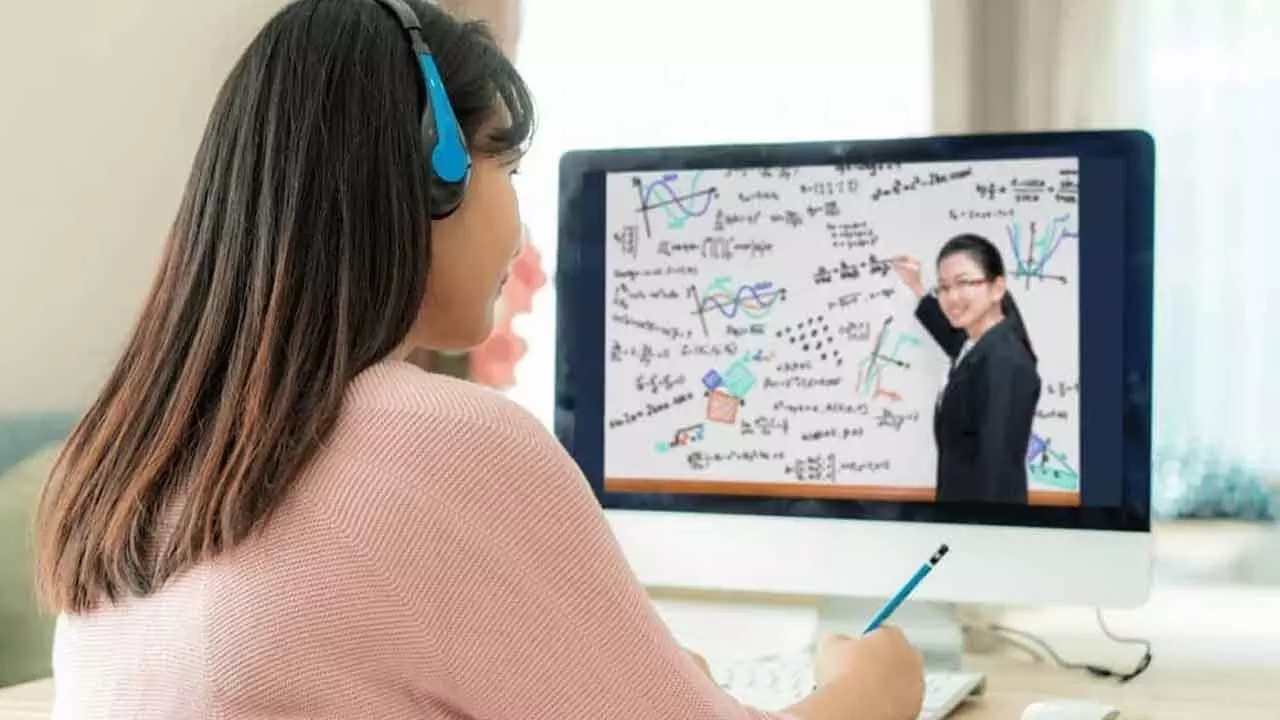From chalkboards to keyboards

Impact of technology on modern classrooms
We know that technology plays a crucial role in modern education in the time that we are living. It has changed the way students learn and teachers teach. Indian classrooms have been undergoing a paradigm shift since the inception of the Indian education system, which is evident in the methodologies of teaching and learning experiences with the advent of digital tools and platforms. This article explores the paradigm shift in Indian classrooms by technology and what it holds for the future.
For so many decades, the chalkboard method was the backbone of the Indian education system. Teachers used to deliver lectures using chalks and blackboards, which, though might have worked in favour of big groups, usually missed individual engagement and interactivity. Thus, it suffered from its one-way communication style and dependency upon rote learning. However, such a method has laid a strong foundation for discipline and primary education among most of us.
The shift from this conventional method to digital tools was a significant transformation in how education was being imparted, aimed at overcoming the existing limitations and subsequently enhancing learning experiences. Initially, teachers used simple digital tools like computers and projectors to make interactive content and multimedia presentations, thereby reducing their dependency on the singular chalk-and-talk approach. This made learning more dynamic and accessible. Technology integration in teaching methodologies made lessons more realistic and helped in the effective understanding of complex topics. Students started to retain information for a longer span. Such factors marked the beginning of a new era in education, setting the stage for a digital transformation that would be far-reaching.
The rise of e-learning platforms
Along with the spread of the internet, the prospect of e-learning solutions offering diverse educational resources, virtual classrooms, and digital assessment services has dawned. This allows students to seek requisite educational material at anytime and anywhere. This development has become beneficial in breaking geographical barriers and democratizing education.
The pandemic expedited the adoption of e-learning by moving quickly into online education. The resultant disturbances in learning are minimal, thanks to adaptation to such a hybrid model, i.e., in-person learning and instructional design via technology. This showcases the flexibility of the Indian education system in equipping students and teachers with technology to support learning without halts.
Personalized learning and edtech
With the innovation of smartphones, budget laptops, tablets, and more, education technology is steered to the front row in contemporary education. Adaptive learning platforms and learning experiences tailored to each student are the order of the day and it helps teachers adapt their lessons to fit the needs of their students. Data analytics helps bring to the fore who needs more support and on what topics, empowering teachers to make targeted interventions, consequently strengthening the learning outcome.
Personalized learning gives learners independence and flexibility regarding learning time, pace, and space. It caters to different learning styles and ensures that each learner has equal amounts of necessary support to reach their complete academic potential.
Engaging and interactive learning
One of the most important benefits of using technology in education is that it creates interactive teaching. Digital, interactive whiteboards, educational videos, simulations, and gamified learning applications easily catch student’s attention, making learning enjoyable. Interactive media tools enhance active participation through various experiences and promote greater comprehension and retention of lessons.
Further ahead in interactive learning, immersive technologies such as AR and VR change the ball game. They can take students back to ancient times and events, far-off planets, and deep into complex scientific processes, making learning an adventurous prospect. By invoking curiosity among students, concepts that seemed impossible to understand earlier become easily comprehended.
Breaking barriers for inclusivity
Integration of technology in education certainly enhances inclusivity. It enables students from remote and rural areas to connect with peers and educators across the globe through digital tools and online platforms. This further bridges the educational gap for such students. It also empowers differently-abled students with assistive tools such as screen readers, text-to-speech software, and online content with subtitles. Technology advancements ensure all students have easy access to quality learning materials, whether they are physically challenged or miles away from school.
Challenges
With the inclusion of technology in the classroom, there are a few challenges that should be taken into consideration. There is a huge digital divide, in which most students lack access to the proper digital devices and reliable internet connection. Equal access to technology should be provided so that there are no disparities when it comes to learning. Moreover, the distraction that technology can pose in class cannot be ruled out. With many digital devices and online sites, one can easily get distracted from studies. The instructors need to balance the use of technology so that it benefits learning rather than causing detriment.
Bottomline
In essence, technology certainly redefines the Indian education system from blackboards to typing on the keyboard. In this continuum, digital tools bring in higher accessibility, engagement, personalization, collaboration, and inclusivity. But now it is time to balance conventional teaching methodologies with technology in order to make a round of development. Wise harnessing of technology can lead to an empowered generation with high skills to drive innovation and growth in the digital era.













